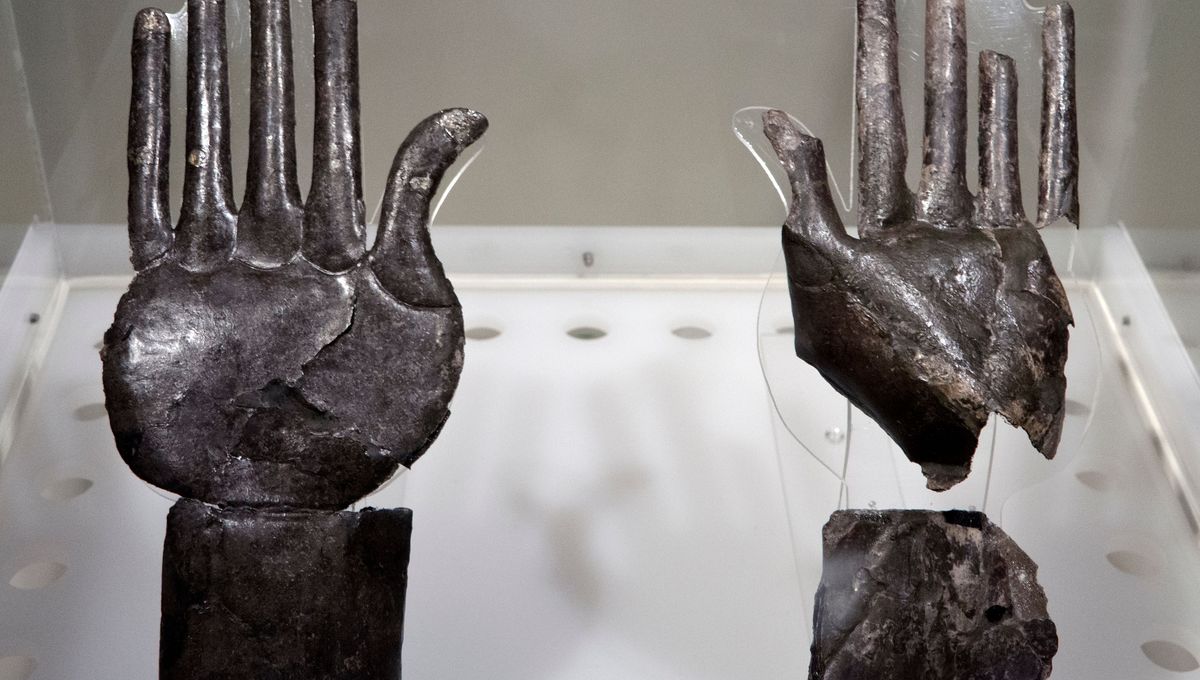
In 2012, a group of archaeologists were digging at a site in Italy in the hopes of rediscovering a lost Etruscan tomb, known as the Tomb of the Sun and Moon, that had once been a popular tourist destination in the 18th and 19th century. Unfortunately, they were not successful, but their failure led to them to discover something else – the Tomb of the Silver Hands. So what is this tomb and how did it get this unusual name?
Discovering the mysterious tomb
If you were anyone in the late 18th or early 19th century, you went on the Grand Tour of Europe. And by “anyone”, we mean young, upper class, wealthy, and male. But that aside, the Grand Tour was a coming-of-age ritual for many young elites who traveled Europe to bathe in the cultural legacy of classical antiquity and the Renaissance.
On this horizon-expanding journey, budding tourists would visit a range of sites across Europe, but would inevitably end up in Italy where they would visit a popular site in Vulci, about 75 miles northwest of Rome.
Here, in the late 18th century, an excavation discovered numerous burials in what was called the Necropoli dell’Osteria (Necropolis of the Pub), which dated from the seventh to the fourth century BCE, and belonged to the enigmatic Etruscan culture that lived in the area at the time.
The necropolis contained a range of spectacular and richly decorated tombs that were given grandiloquent names to attract tourists, such as the Tomb of the Sun and Moon, the Tomb of the Inlaid Ceiling and others. But despite their popularity, the exact location of this site fell into obscurity when enthusiasm for antiquity declined in the middle of the century and tourists abandoned it.
It was therefore a remarkable turn of events when the team led by Carlo Casi, an archaeologist at the Archaeological Park in Vulci, discovered the new site, which contained more than 20 graves, tombs, and large funerary complexes. The Tomb of the Silver Hands got its name from two silver hands that were found in the central chamber. The hands were remarkably well preserved, especially the left hand which showed little damage – a testament to the craftmanship that created them. They are finely detailed, showing open palms with traces of gold on the fingers as well as gold-plated fingernails.
Given the location of this discovery within the complex, and the quantities of grave goods accompanying it, the team concluded that the tomb likely belonged to a wealthy Etruscan family.
A window on Etruscan culture
The Etruscan civilization lived in Italy and reached its height in the sixth century BCE. They were known to be a skilled and advanced culture, renowned in the classical world for their bronze work and craftmanship. Although their origins are still debated among scholars, they were eventually absorbed into the rising Roman culture that became the dominant civilization on the Italian Peninsula. The archaeological tombs in Vulci are now one of the richest sources of artifacts for this lost civilization.
But while the silver hands may appear to be unusual at first glance, they are actually representative of a fascinating funerary rite that had its origins in Ancient Greece. As such, they provide a glimpse into the burial practices of the Etruscan people.
The silver hands are thought to belong to a sphyrelaton, a wooden funerary sculpture or dummy that was made to protect the deceased’s soul after cremation or burial. These effigies were often accompanied by bronze or silver hands, such as those found in the tombs.
A sphyrelaton could take various forms: sometimes it was a supernatural being, other times a warrior or even a representation of the dead person who was being buried. In this case, the effigy was that of a woman and is thought to be a symbol of the woman at rest in the tomb.
The team also discovered threads of purple cloth they believe were used to tie gold studs to a garment worn by the sphyrelaton. They also recovered little gold balls, pieces of faience, amber, and bone beads that may have belonged to several necklaces.
Although we do not know who this person was, the objects that were discovered with the silver hands suggest they were someone of means, to say the least. Other examples of sphyrelaton hands found at Vulci and elsewhere were made of bronze and usually lacked the fine details of their silver counterparts. As such, the finds in the Tomb of the Silver Hands provide an exceptional view on the life (and death) of a people long lost to history.
Source Link: The Mysterious Tomb Of The Silver Hands